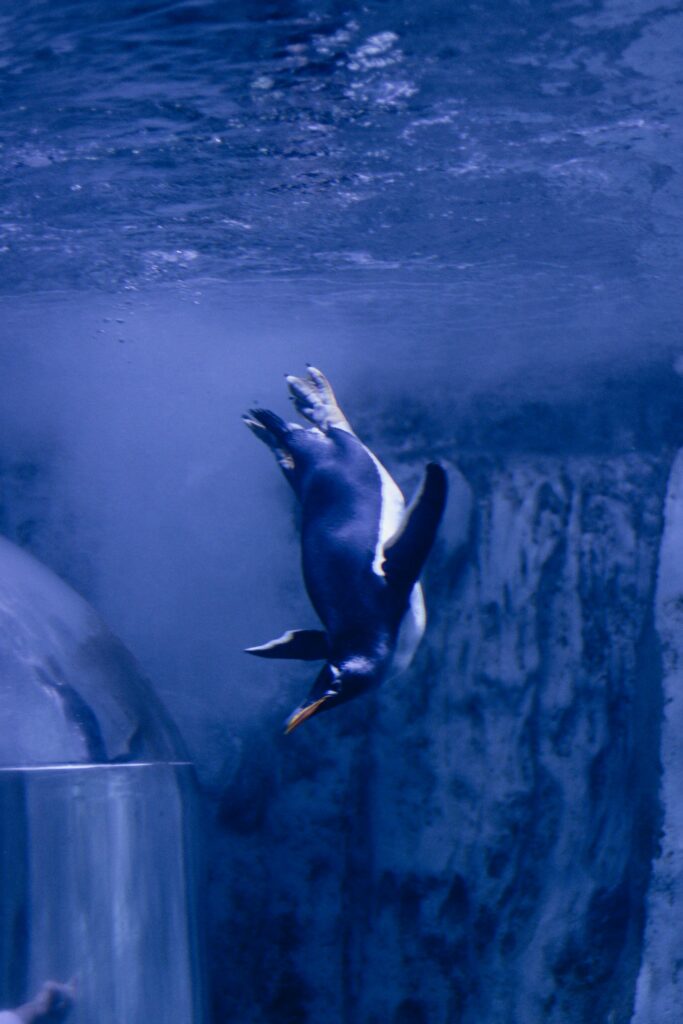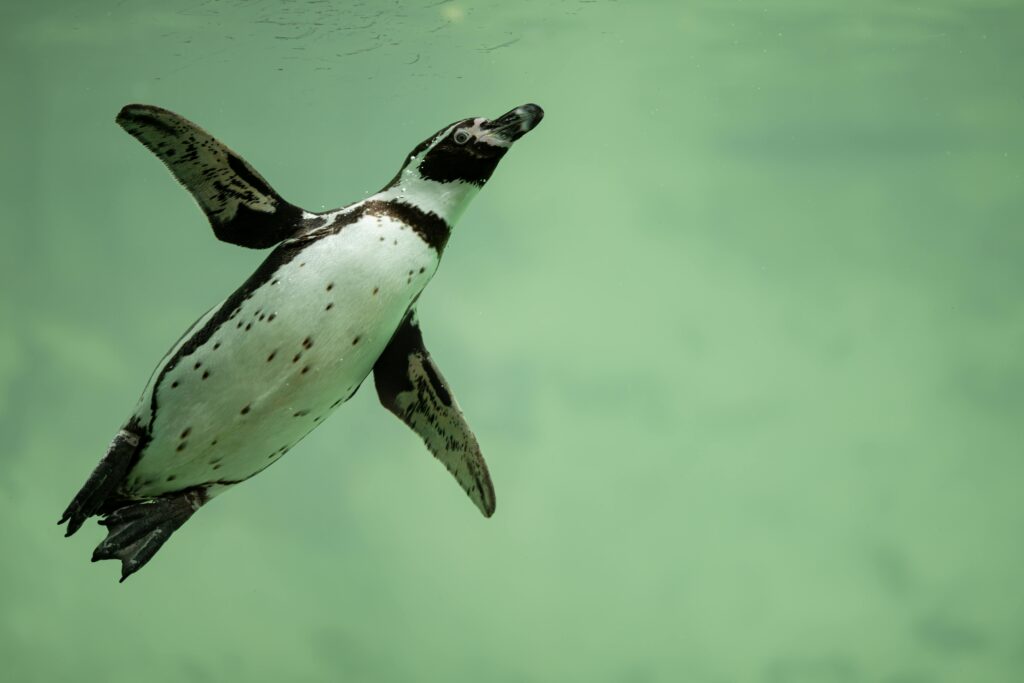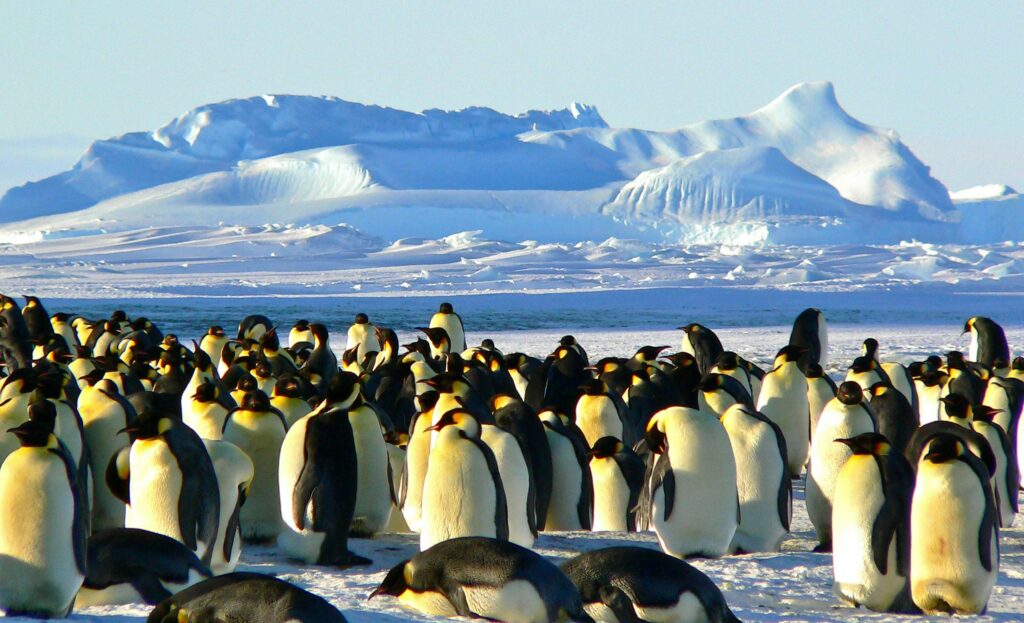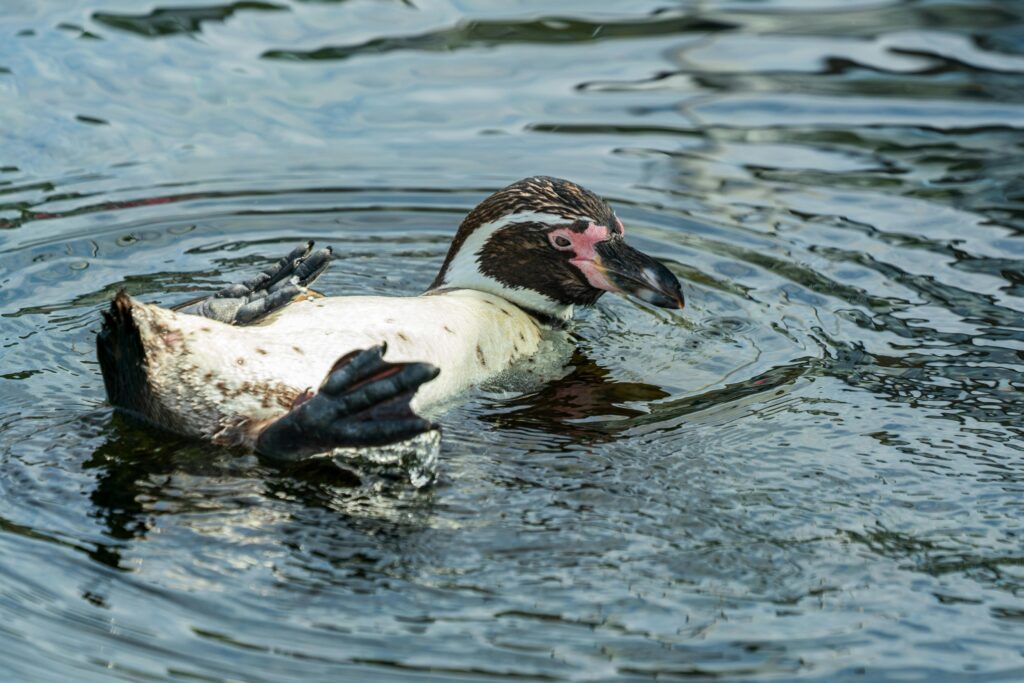Have you ever marveled at how penguins glide effortlessly through the frigid waters of the Antarctic? These charismatic creatures have evolved to become masters of aquatic locomotion. In today’s article, we will dive deep—both literally and figuratively—into the fascinating world of penguin swimming speed and diving ability. From their streamlined bodies to their exceptional oxygen management during deep dives, penguins embody an evolutionary masterpiece that allows them to thrive in one of the harshest environments on Earth.
Overview of Penguin Locomotion
Penguins are unique among birds; while many are adapted for flight, penguins have evolved for life in the water. Their entire physiology is fine-tuned for swimming, turning them into agile predators beneath the waves. This article not only explores how fast they swim but also examines the remarkable adaptations that make their diving abilities second to none.
The Importance of Swimming and Diving for Survival
For penguins, swimming is not merely a mode of transportation—it’s a critical survival tool. Their swimming speed enables them to evade predators and swiftly catch prey. Diving, on the other hand, is essential for accessing food sources hidden deep beneath the surface. These skills are a matter of life and death, honed by millions of years of evolution in extreme environments.
Evolution of Aquatic Adaptations in Penguins
Natural Selection and Adaptation Processes
Penguins have not always been the streamlined aquatic marvels we see today. Over millions of years, natural selection has sculpted their bodies, refining features that enhance swimming efficiency and diving capability. Evolution has favored those with the ability to conserve energy during long dives and maintain high speeds in water—traits that have become essential for survival in the harsh Antarctic environment.
Comparative Insights with Other Birds
While many birds are built for the skies, penguins chose a different path. When compared to their flying counterparts, the differences in muscle distribution, bone density, and overall body structure are striking. These adaptations underscore the unique evolutionary pressures faced by penguins, where the ocean is both a home and a hunting ground.

The Anatomy Behind a Swimming Penguin
Streamlined Body Structure
Penguins are a study in aerodynamic and hydrodynamic efficiency. Their bodies are perfectly designed to minimize drag and maximize speed in water.
Hydrodynamic Shape
A penguin’s body is sleek and torpedo-like, allowing it to cut through water with minimal resistance. This streamlined shape is a direct result of evolutionary pressures, ensuring that every movement is as efficient as possible.
Specialized Muscle Composition
The muscle fibers in penguins are uniquely adapted to sustain prolonged periods of intense activity. These muscles not only provide the power required for rapid bursts of speed but also support endurance during lengthy dives.
Wing and Flipper Adaptations
In place of wings used for flight, penguins have evolved flippers that serve as powerful underwater paddles. These flippers are not only robust but also flexible, allowing for intricate maneuvers during high-speed chases and tight turns. Their design ensures that every stroke is both efficient and effective, contributing to the overall agility of the penguin.
Measuring Penguin Swimming Speed
Tools and Techniques
Understanding how fast a penguin can swim involves a combination of innovative tools and field techniques. Researchers use underwater cameras, GPS trackers, and accelerometers to gather data on swimming speed and patterns. These instruments capture every nuance of a penguin’s movement, allowing scientists to analyze how their unique adaptations translate into measurable performance.
Field Studies and Observational Data
Field studies conducted in the wild provide invaluable insights into the swimming behavior of penguins. Observations in their natural habitat reveal that some species can reach impressive speeds, particularly when evading predators or pursuing prey. These studies also highlight the variability in speed, which can be influenced by factors such as water temperature, current, and even the time of day.
Diving Deep: Unraveling Penguin Diving Ability
Physiological Adaptations for Deep Dives
Diving is one of the most awe-inspiring feats of penguin physiology. Their bodies are equipped with several adaptations that allow them to dive to significant depths without compromising their health. One key adaptation is the ability to store oxygen in muscles and blood, enabling them to remain underwater for extended periods. Additionally, penguins have a high tolerance for carbon dioxide, allowing them to dive deeper and stay submerged longer than most other birds.
Oxygen Management and Pressure Regulation
During a dive, a penguin’s body must carefully manage oxygen reserves. Specialized hemoglobin and myoglobin proteins bind oxygen, ensuring that vital organs continue to receive the oxygen they need. Moreover, the flexible ribcage and unique blood flow adjustments allow penguins to withstand the immense pressure of deep waters. These adaptations not only protect them from the effects of pressure but also enhance their overall diving efficiency.

Environmental and Behavioral Influences
Impact of Weather and Ocean Currents
The performance of a penguin in the water can be significantly influenced by external factors. Ocean currents, water temperature, and weather conditions all play a role in determining swimming speed and dive depth. For example, strong currents can either assist or hinder a penguin’s movement, while colder water typically requires more energy to navigate.
Seasonal Variations and Mating Behavior
Penguins are also affected by seasonal changes, which impact their swimming and diving patterns. During mating season, for instance, increased activity levels and altered hunting strategies can lead to noticeable variations in swimming speed. These seasonal behaviors are crucial for successful breeding and the overall survival of the species.
Comparative Analysis Among Penguin Species
King Penguins vs. Emperor Penguins
Not all penguins are created equal when it comes to swimming and diving. King Penguins, known for their agility, often display faster swimming speeds compared to Emperor Penguins, who may be built more for endurance during prolonged dives. Each species has developed its own set of strengths that suit its ecological niche and feeding habits.
Unique Traits of Lesser-Known Species
Beyond the well-known King and Emperor Penguins, other species also exhibit remarkable aquatic capabilities. For instance, some smaller species may excel in quick, agile maneuvers, while others are adapted for deep diving. Understanding these differences can offer insights into the diverse strategies penguins employ to thrive in various environments.
The Role of Behavior in Enhancing Locomotion
Hunting Strategies and Techniques
Behavior plays a pivotal role in the way penguins swim and dive. Their hunting techniques are a blend of speed, stealth, and precision. By observing how penguins approach, chase, and capture their prey, researchers have uncovered intricate behaviors that maximize their efficiency in water. These strategies are often refined through years of practice and social learning within colonies.
Social Dynamics and Group Swimming
Penguins are social creatures, and their interactions often influence their swimming behavior. Group dynamics can lead to synchronized movements that not only confuse predators but also conserve energy through drafting. The collective behavior observed during group swims is a testament to the importance of social interactions in enhancing individual performance.
Technological Advances in Studying Penguin Locomotion
Tracking Devices and Sensor Technology
The advent of modern technology has revolutionized the study of penguin swimming and diving. Miniaturized tracking devices and advanced sensors provide real-time data on a penguin’s speed, depth, and overall movement patterns. These devices are lightweight and unobtrusive, ensuring that the natural behavior of the birds remains undisturbed.
Data Analysis and Simulation Models
Once the data is collected, sophisticated software and simulation models help researchers interpret the findings. These tools allow scientists to recreate a penguin’s underwater journey, analyze the forces at play, and even predict how changes in the environment might affect their performance. The integration of technology and biology is unlocking new insights into the marvels of penguin locomotion.
Environmental Challenges and Conservation
Effects of Climate Change and Ice Melt
Penguins face numerous environmental challenges that directly impact their swimming and diving abilities. Climate change, resulting in rising temperatures and melting ice, alters the habitat in which they thrive. These changes can disrupt feeding patterns and force penguins to adapt their behavior, sometimes at the cost of their efficiency in water.
Human Impact and Conservation Efforts
In addition to natural challenges, human activities pose significant threats to penguin populations. Pollution, overfishing, and habitat destruction are just a few of the issues that can impair the delicate balance of the Antarctic ecosystem. Conservation efforts are now more crucial than ever to ensure that these remarkable birds continue to flourish in their natural habitat.
Future Directions in Penguin Research
Emerging Trends in Marine Biology
The study of penguin locomotion is constantly evolving, with new research trends emerging every year. Advances in marine biology are shedding light on previously unknown aspects of penguin behavior and physiology. As researchers delve deeper into the mysteries of the underwater world, we can expect groundbreaking discoveries that further our understanding of these incredible animals.
Innovative Technological Applications
Future research will likely harness even more advanced technologies to monitor and analyze penguin behavior. Innovations in artificial intelligence, machine learning, and sensor technology promise to offer unprecedented insights into how penguins manage their energy, speed, and endurance. These advancements will not only benefit wildlife research but could also inspire new engineering solutions based on natural principles.
Biomimicry: Learning from Penguin Efficiency
Energy Conservation Techniques
Penguins are masters of energy conservation. Their ability to balance speed and endurance is a direct result of evolutionary innovations that optimize every stroke and dive. By studying these techniques, scientists and engineers can develop new strategies for energy-efficient design in various fields, from sports equipment to renewable energy technologies.
Applications in Engineering and Robotics
The efficient locomotion of penguins is inspiring a wave of biomimetic innovations. Engineers are looking at how the streamlined design and coordinated movement of penguins can be applied to the development of aquatic robots and autonomous underwater vehicles. These technologies could revolutionize underwater exploration, offering new ways to study the oceans while minimizing energy consumption.
The Balance of Speed, Endurance, and Agility
Analyzing Trade-Offs in Locomotion
Every adaptation in penguins involves trade-offs. While speed is essential for escaping predators and catching prey, endurance and agility are equally important for sustained performance in challenging environments. This delicate balance between speed and endurance is a fascinating aspect of penguin physiology that offers insights into broader principles of biomechanics and evolutionary biology.
Lessons for Sustainable Design
The natural efficiencies found in penguin locomotion serve as a blueprint for sustainable design. Whether it’s designing eco-friendly vehicles or energy-efficient machinery, the lessons drawn from penguin swimming and diving can inspire innovations that are both effective and environmentally responsible.
Conclusion
In the vast and unforgiving waters of the Antarctic, penguins have evolved to become exemplary swimmers and divers. Their remarkable adaptations—ranging from streamlined body structures to sophisticated oxygen management systems—allow them to perform feats that continue to astound scientists and nature enthusiasts alike. By studying their swimming speed and diving ability, we not only gain insight into the wonders of natural evolution but also unlock potential innovations that could reshape modern technology. Penguins remind us that nature’s designs, refined over millions of years, hold the keys to both survival in extreme environments and inspiration for sustainable progress.
FAQs
- How fast can penguins swim in the wild?
While speeds vary among species, many penguins can reach speeds of up to 15-20 km/h when in full pursuit of prey or evading predators. - What physiological traits enable penguins to dive so deep?
Penguins have specialized muscle fibers, efficient oxygen storage in their blood and muscles, and flexible ribcages that allow them to manage high water pressure during deep dives. - How do environmental changes affect penguin swimming and diving abilities?
Changes such as rising water temperatures and melting ice can alter ocean currents and prey availability, which in turn may affect how penguins swim and dive in search of food. - What technological tools are most commonly used to study penguin locomotion?
Researchers use GPS trackers, accelerometers, and underwater cameras to monitor penguin movement, combined with advanced simulation models for data analysis. - How can the study of penguin swimming influence human technology?
By mimicking the energy-efficient and streamlined design of penguins, engineers are developing innovations in robotics, transportation, and energy conservation that draw inspiration from these natural marvels.




